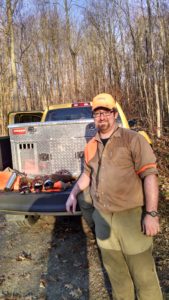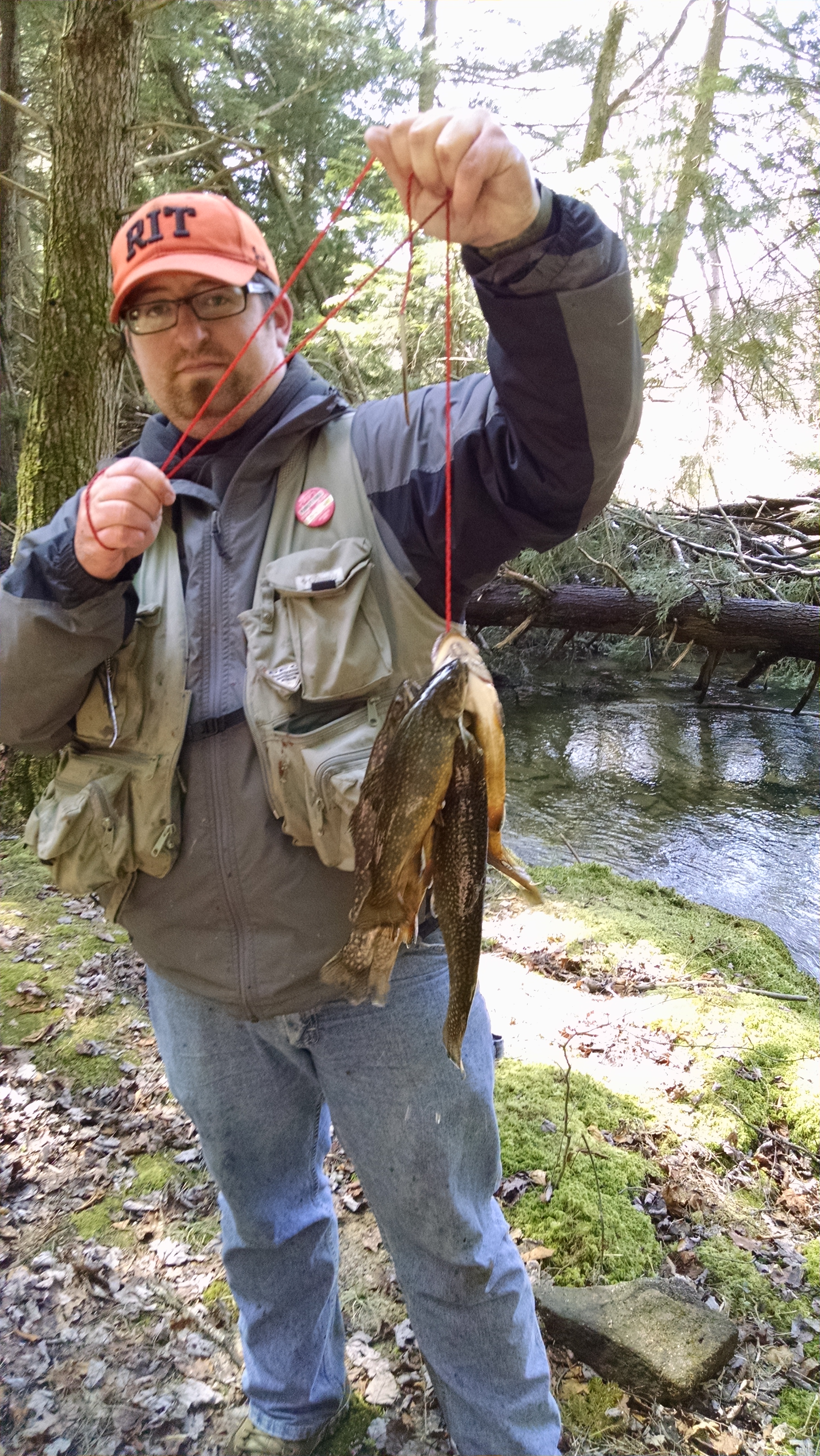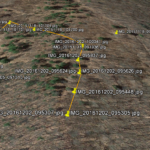Family Fun
Recently I drove to my family camp for the Pennsylvania Trout opening week; working outside of Annapolis MD meant that I had a long drive ahead of me. Weather was forecasted to be fair but rainy, pretty normal for PA in April to be switching between sunscreen and rain jackets. After a harrowing journey on the Washington beltway (honestly, are there any lazy drives on that road ever?) and through much of the state I finally arrived at our idyllic cabin on the Allegheny River. Normally I fish with my dad, but this time my younger brother was there, and for the first time in many years he purchased a license to go out with us. Now, I don’t see my brother a whole heck of a lot — so when I realized he was there for a week of trout fishing, I wanted to be a good host. He knew many of the waters we’d grown up on, but he hadn’t taken part in the dirt road odysseys my father and I had spent the last ten years building our atlas of fishing holes in the Allegheny National Forest and the outlying counties.
I asked my dad and brother “Where do you want to fish this week?” My dad, just enjoying the time with us and the dogs said “where there’s water”, and my brother answered “where there’s fish.” My dad and I have spent a long time together in the woods, hunting where there’s no deer, and fishing where I can’t imagine there have ever been fish — so his statement was accurate. He had no real inclination toward actually catching a fish. Sure, it’s fun, but just spending time outside and together as a family was pretty rewarding, not spending time at work under artificial light sitting in a cubicle was very rewarding.
So I gave some thoughts to my brother’s comment, and as much as I wanted to go to a stream where my father and I had previously caught native brook trout, this was an outing that we’d hoped to get some eating size trout. In Pennsylvania that means chasing stocked trout, generally speaking. There are places where you can catch some sizable natives and we’re novices to the steelheading waters closer to Lake Erie, but where we’re at, and the athletic ability of the folks I was taking with me… I needed easy access, and some chunky fish to keep my brother in the game.
Trout Stocking
Pennsylvania, like many states in the east have a well established trout stocking program, and by paying attention to stocking schedules, maps, and the weather you can very easily get on the fish within the state. You still need to know how to read streams, and the fish need to be biting that day, but finding fish can be one of the easier tasks on your list if you just know where to look. Interested in knowing more on the history of trout stocking in PA? There’s this awesome article I found in PennLive.
Places like Maryland will tell you the rough number, in increments of 50 or 100 each river, lake, or stream gets and when the trout are being stocked. Now, I don’t chase stock trucks, but in years where the weather doesn’t cooperate — it does help to be there the week that the streams are stocked if you’re looking to do battle with brookies and ‘bows. If you’re taking children out fishing, or even first time anglers, it’s a good idea to take them to a place where they have higher odds of success. It doesn’t do any good to take someone new to a sport to your favorite hole you once caught a trophy five years ago and say “Sometimes I fish for weeks on end and catch nothing!” That doesn’t provide nearly the ember to kindle the passion in someone like holding up their very first trout. In the end, who cares if it’s a stocked fish or native for the newbies?
Birds

If it wasn’t for pheasant stocking programs, my father and I wouldn’t have had this awesome day in the field!
Stocking doesn’t end with trout, where I grew up there was also a significant Pheasant stocking program. While Maryland, where I live now has discontinued their stocking program some time ago, and Pennsylvania’s program seems down on their luck — looking to implement a pheasant stamp or raise prices on licenses and recently stocking their remaining breeding stock from their pheasant hatcheries stocked birds in the East are one of the only ways to get in a legitimate pheasant hunt during the fall. There are Wild Pheasant Restoration Areas being put together as part of a partnership between state agencies and Pheasants Forever, but many do not allow hunting while they attempt to make a wild reproducing population of pheasants.
Megafauna
Existing Elk herds in the Northeastern United States would not exist without stocking programs. You might not think of elk as stocked animals, but the herds in Pennsylvania, Virginia, West Virginia, Kentucky, and Wisconsin only exist because they were transplanted from out west. Allowing elk, and in some cases bison to repopulate areas of their natural range give all citizens new oppurtunities both sporting and viewing. These populations, with controlled hunting seasons and tag numbers regulated by biologists (and in some cases politicians) can be allowed to grow and be managed, bringing new revenue streams in to the regions that host them. Because of the costs incurred on a western elk hunt, many hunters never get the opportunity to go, so having a herd one state away is a definite advantage to hunters that otherwise couldn’t live out a true dream hunt. There are other issues in hunting stocked elk that may raise some eyebrows, some states offer up a ‘charity’ or ‘Governors’ tag to the highest bidder. Pennsylvania has an elk tag auction every year, with proceeds going back into the Game Commission coffers, exactly where they belong. It’s an interesting and muddy issue on putting a value on wildlife, but that’s for another article.
There are even discussions about introducing bison back in the United States. Steven Rinella often quotes that 94% of the American Bison in the United States are managed as part of private herds. Further, the large herds in Yellowstone that are considered “wild” have been acclimated to human interaction, though they are still quite dangerous. What I really want to see is folks like the American Prairie project reintroduce large herds of bison to a huntable level. This type of activity, while it may have repercussions to farmers in the immediate, if its done properly can do so much for the local economies that hunting and fishing already bolsters.
A Place to call Home
Without public lands, many of these animals wouldn’t have a place to call home. Yes, these are all animals placed for hunting and fishing, but also for conservation and preservation of biodiversity within the states that the stocked fauna exist. Not all animals are killed each year, and while the goal is largely to produce a native breeding population, not all programs are as easily managed as the elk stocking and hunting programs. Pheasants for example do not winter over well in Northern Pennsylvania anymore, as the predator mix has changed as have farming practices, the climate, and human encroachment on their habitat. Creating wild places for these animals to live, and reasonable hunting tag fees to fund the stocking and maintenance programs is the only way to carry on some of these sporting traditions for generations to come.





